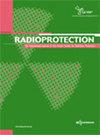使用无人机伽马射线光谱仪系统评估点放射源或扩展放射源
IF 1.8
4区 医学
Q4 ENVIRONMENTAL SCIENCES
引用次数: 0
摘要
近来,无人驾驶飞行器(UAVs)已成为一种新型工具,可用于在危险情况下执行与辐射防护相关的各种任务。本文介绍了基于无人机的旋转翼系统的开发情况,该系统配备了 LaBr3(Ce) 探测器,能够对点辐射源和扩展辐射源进行高精度量化。无人机精确测量 H*(10)和相关放射性核素活度水平的能力已通过两种情况下的实际测试进行了评估。结果表明不确定性在 20% 左右。本文章由计算机程序翻译,如有差异,请以英文原文为准。
Use of a drone-based gamma-ray spectrometry system to assess point or extended radioactive sources
In recent times, the utilization of unmanned aerial vehicles (UAVs) has emerged as a novel tool for a wide range of tasks associated with radiological protection in hazardous situations. This article presents the development of a rotary-wing drone-based system equipped with a LaBr3(Ce) detector, enabling highly accurate quantification of both point and extended radiation sources. The drone's capability to precisely measure H*(10) and the activity levels of the involved radionuclides has been assessed through real-world testing in two scenarios. The results demonstrate uncertainties on the order of 20%.
求助全文
通过发布文献求助,成功后即可免费获取论文全文。
去求助
来源期刊

Radioprotection
ENVIRONMENTAL SCIENCES-PUBLIC, ENVIRONMENTAL & OCCUPATIONAL HEALTH
CiteScore
3.30
自引率
54.50%
发文量
35
审稿时长
>12 weeks
期刊介绍:
Radioprotection publishes articles on all aspects of radiological protection, including non-ionising as well as ionising radiations. Fields of interest range from research, development and theory to operational matters, education and training. The very wide spectrum of its topics includes (theoretical and practical aspects): dosimetry, instrument development, specialized measuring techniques, epidemiology, biological effects (in vivo and in vitro) and risk and environmental impact assessments.
 求助内容:
求助内容: 应助结果提醒方式:
应助结果提醒方式:


